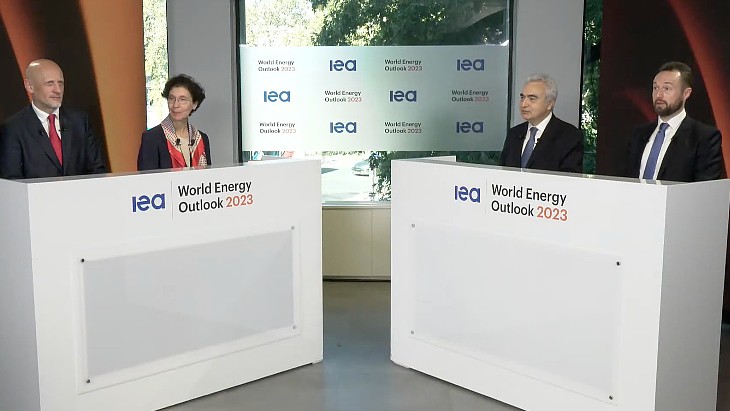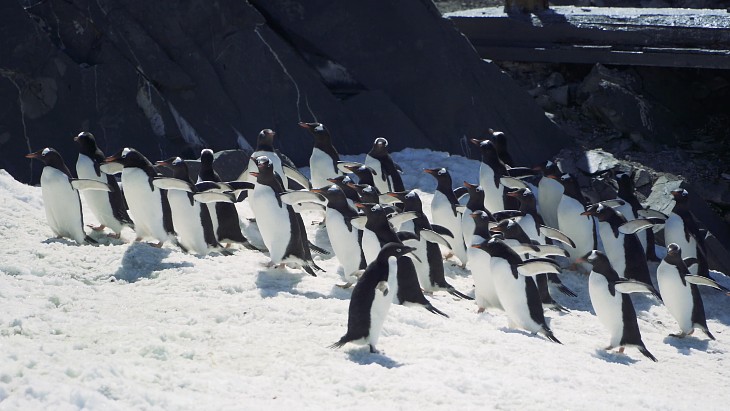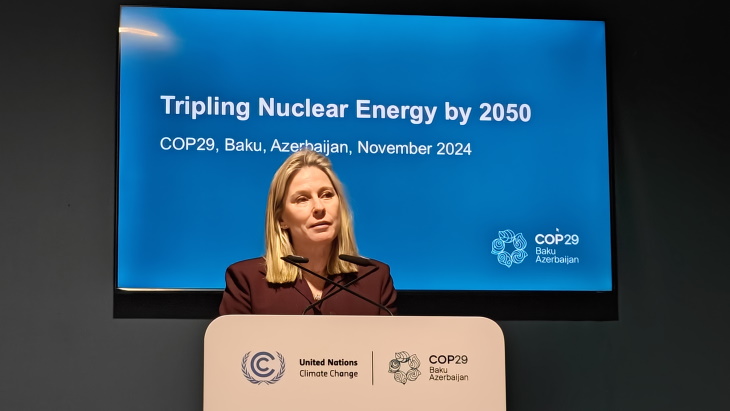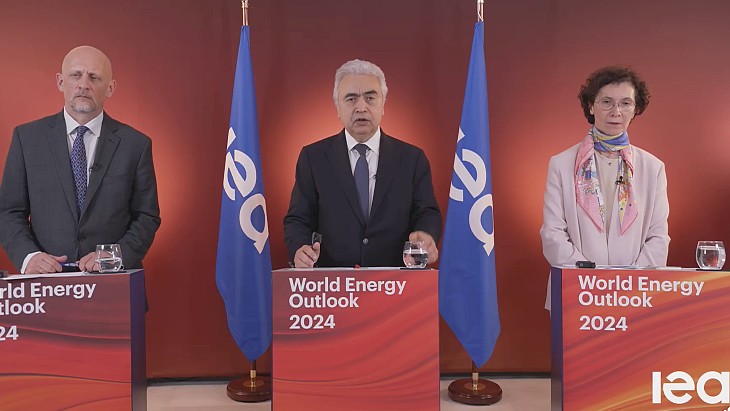IEA sees increasing role for nuclear in energy transition

The IEA says major shifts under way today - including the rise of clean energy technologies such as solar, wind, electric cars and heat pumps - are set to result in a considerably different global energy system by the end of this decade.
"If countries deliver on their national energy and climate pledges on time and in full, clean energy progress would move even faster," it says.
However, it noted that demand for fossil fuels still remains far too high to keep within reach the Paris Agreement goal of limiting the rise in average global temperatures to 1.5°C. "Bending the emissions curve onto a path consistent with 1.5°C remains possible but very difficult," the IEA said. "The costs of inaction could be enormous: despite the impressive clean energy growth based on today's policy settings, global emissions would remain high enough to push up global average temperatures by around 2.4°C this century, well above the key threshold set out in the Paris Agreement."
The IEA said its latest World Energy Outlook "proposes a global strategy for getting the world on track by 2030 that consists of five key pillars, which can also provide the basis for a successful COP28 climate change conference. They are: tripling global renewable capacity; doubling the rate of energy efficiency improvements; slashing methane emissions from fossil fuel operations by 75%; innovative, large-scale financing mechanisms to triple clean energy investments in emerging and developing economies; and measures to ensure an orderly decline in the use of fossil fuels, including an end to new approvals of unabated coal-fired power plants."
The World Energy Outlook considers three scenarios. The Stated Policies Scenario provides an outlook based on the latest policy settings, including energy, climate and related industrial policies. The Announced Pledges Scenario assumes all national energy and climate targets made by governments are met in full and on time. The Net Zero Emissions by 2050 Scenario looks at what must be done to limit global warming to 1.5°C.
The IEA says the legacy of the global energy crisis "may be to usher in the beginning of the end of the fossil fuel era". The momentum behind clean energy transitions is now sufficient for global demand for coal, oil and natural gas to all reach a high point before 2030 in the Stated Policies Scenario, it says. The share of coal, oil and natural gas in global energy supply - stuck for decades around 80% - starts to edge downwards and reaches 73% in the this scenario by 2030.
The Stated Policies Scenario sees a peak in energy-related CO2 emissions in the mid-2020s but emissions remain high enough to push up global average temperatures to around 2.4°C in 2100. The IEA noted this outcome has improved over successive editions of the WEO "but still points towards very widespread and severe impacts from climate change".
Nuclear capacity growth
Prospects for nuclear power have improved in leading markets, the World Energy Outlook says, with support for lifetime extensions of existing nuclear reactors in countries including Japan, South Korea and the USA, and support for new reactors in Canada, China, the UK, USA and several EU member states. It notes that nuclear is "the second-largest source of low-emissions power worldwide today, behind hydropower but far larger than wind or solar PV".
Nuclear generating capacity increases from 417 GWe in 2022 to 620 GWe in 2050 in the Stated Policies Scenario, with growth mainly in China and other emerging market and developing economies, while advanced economies carry out widespread lifetime extensions and look to build new projects to offset retirements. In this scenario, global nuclear generation increases from 2682 TWh in 2022 to 4353 TWh in 2050, while its share of total electricity production decreases from 9% to 8% over the same period.
The IEA says large-scale reactors remain the dominant form of nuclear power in all scenarios, including advanced reactor designs, but the development of and growing interest in small modular reactors (SMRs) increases the potential for nuclear power in the long run. More lifetime extensions and new construction in countries open to nuclear power boost global capacity in the Announced Pledges Scenario to 770 GWe in 2050, with nuclear output doubling to 5301 TWh. The Net Zero Emissions by 2050 Scenario sees nuclear generating capacity reaching 916 GWe by 2050, with a production of 6015 TWh.
"The transition to clean energy is happening worldwide and it's unstoppable. It's not a question of 'if', it's just a matter of 'how soon' - and the sooner the better for all of us," said IEA Executive Director Fatih Birol. "Governments, companies and investors need to get behind clean energy transitions rather than hindering them. There are immense benefits on offer, including new industrial opportunities and jobs, greater energy security, cleaner air, universal energy access and a safer climate for everyone. Taking into account the ongoing strains and volatility in traditional energy markets today, claims that oil and gas represent safe or secure choices for the world's energy and climate future look weaker than ever."
"Every country needs to find its own pathway, but international cooperation is crucial for accelerating clean energy transitions. In particular, the speed at which emissions decline will hinge in large part on our ability to finance sustainable solutions to meet rising energy demand from the world's fast-growing economies. This all points to the vital importance of redoubling collaboration and cooperation, not retreating from them."

_99697.jpg)








_50521.jpg)

